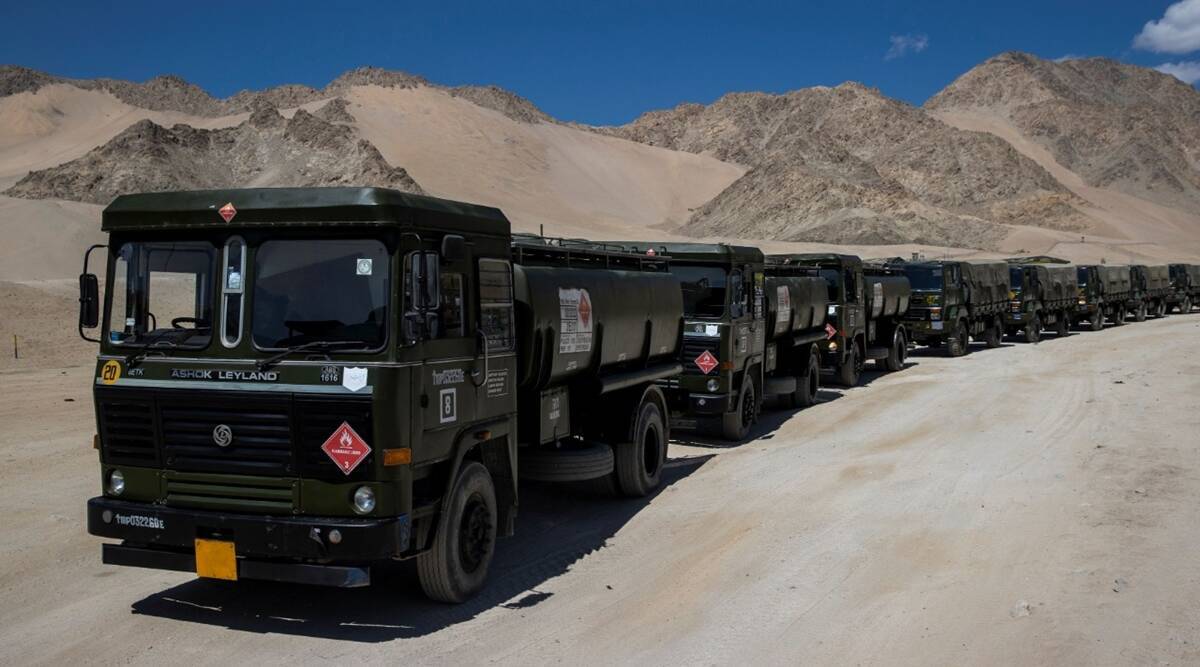China announces ‘synchronised’ disengagement on Pangong north, south banks; India statement awaited
Armour rollback on either side likely first move, frontline troops to step back in phased manner.
Mumbai, February, 10, 2021 : Signaling the first major breakthrough in talks to resolve the nine-month military standoff along the Line of Actual Control in Ladakh, China’s Defence Ministry announced Wednesday that Chinese and Indian troops on the southern and northern shores of Pangong Tso began “synchronized and organized disengagement” in line with the consensus reached between Corps Commanders when they last met on January 24.
There was no immediate statement from the Indian Army. The office of the Defence Minister said Rajnath Singh will make a statement in Rajya Sabha Thursday regarding ‘Present Situation in Eastern Ladakh’.
It has been learned that ground commanders on the north and south banks of Pangong Tso met Tuesday and Wednesday to prepare for the first steps towards disengagement.
Sources in the security establishment said “there will be a phased withdrawal” because that is what “has been decided” mutually. To start with, some armoured columns will be pulled back while frontline troops will continue to remain where they are.
Under the plan, the sources said, troops occupying heights will descend at a later stage. The disengagement, sources underlined, will happen “simultaneously” on the north and south banks of Pangong Tso.
Referring to the PLA troops, sources said: “Some movements are already taking place on their side, of heavy equipment and troops. All that will be monitored and verified. We also have to do the same.”
Sources said a go-ahead for the “preparatory phase” of on-ground disengagement was given to the respective forces from Delhi and Beijing on Tuesday.
“Ground-level commanders from both sides held a meeting over the nitty-gritty of the pullback on the Pangong lake on Tuesday as per agreed terms between the two governments. A meeting was held on Wednesday as well. Things have been put in motion, but as of now no pullback of troops has started,” a government official said.
Sources said ground commanders have been asked to first make arrangements at the new stations where artillery and troops will head back.
“Any movement of artillery will take another two-three days. Troop pullback may happen only after three or four days. A timeline of about a week to 10 days has been set for the process,” another official said.
Senior Colonel Wu Qian, spokesperson for the Chinese Ministry of National Defense, in a written statement, said: “The Chinese and Indian frontline troops at the southern and northern bank of the Pangong Tso Lake start synchronized and organized disengagement from February 10.”
“This move is in accordance with the consensus reached by both sides at the 9th round of China-India Corps Commander Level Meeting,” the Chinese statement said.
The spokesperson for the Chinese embassy in India, in a Twitter post, quoted the Chinese Foreign Ministry spokesperson saying “Chinese & Indian front-line troops began to conduct simultaneous & planned disengagement in Pangong Lake area on February 10. Hope Indian side will work with China to meet each other halfway, strictly implement consensus & ensure smooth disengagement process.”
Any disengagement will mark a significant breakthrough to end the military standoff that began in May last year. On June 15, Indian and Chinese troops clashed in Galwan Valley, leading to the death of 20 Indian troops, and an undeclared number of Chinese soldiers.
There was some disengagement in July but the Chinese refused to complete the disengagement process and both countries brought in additional forces in the depth areas, deploying tanks, artillery and air power.
Only after the disengagement process is completed will the two sides de-escalate and take troops back from the depth areas as well to their original positions.
The north and south banks of Pangong Tso are key to the disengagement process because the standoff began after the Chinese came in 8 km west of Finger 8 on the north bank – the point that India says marks the LAC. Chinese troops have positioned themselves at Finger 4.
Last August, Indian troops surprised the Chinese by occupying dominating heights on the south bank of Pangong Tso, and in the larger Chushul sub-sector.
Indian troops positioned themselves on Gurung Hill, Magar Hill, Mukhpari, Rechin La and Rezang La. They also have direct view of China’s Moldo Garrison, and the strategic Spanggur Gap which can be used to launch offensives — as the Chinese did in 1962.
Indian troops also readjusted their positions on the Pangong Tso north bank, occupying features to dominate Chinese positions on the ridgeline connecting Finger 3 and Finger 4. This scramble for heights led to warning shots being fired by the two sides.
China insisted that India first move its troops back from the south bank while India said the entire eastern Ladakh region, including incursions in Depsang Plains, should be discussed together in talks to resolve the standoff – this was reiterated by the Indians during the January 24 talks.
India has been demanding status quo ante — of troops returning to their April 2020 positions – and simultaneous withdrawal of troops.
Before the onset of the harsh Ladakh winter, each side had around 50,000 troops in the region, backed by tanks, artillery and air defence assets.
Apart from the north and south bank of Pangong Tso, the other friction points include PP15 in Hot Springs, PP17A in Gogra Post area, PP14 in Galwan Valley and the Depsang Plains in the far north where Chinese troops have been blocking Indian soldiers at a place called the Bottleneck, preventing them from accessing their traditional patrolling points PP10, PP11, PP11A, PP12 and PP13. Depsang Plains is close to the strategic Indian base at Daulat Beg Oldie, near the Karakoram Pass.







